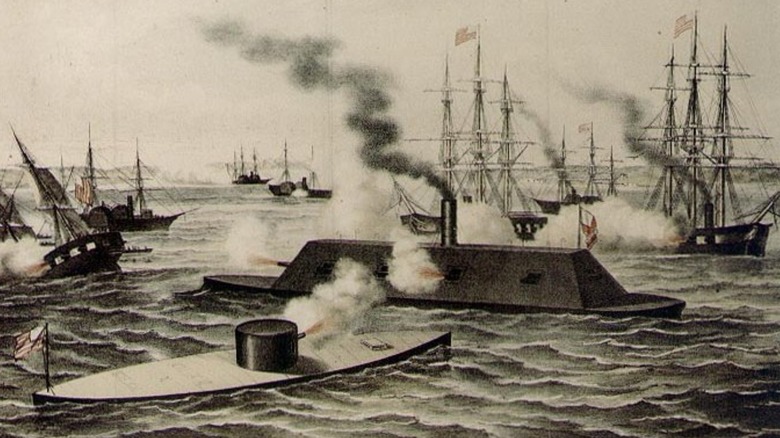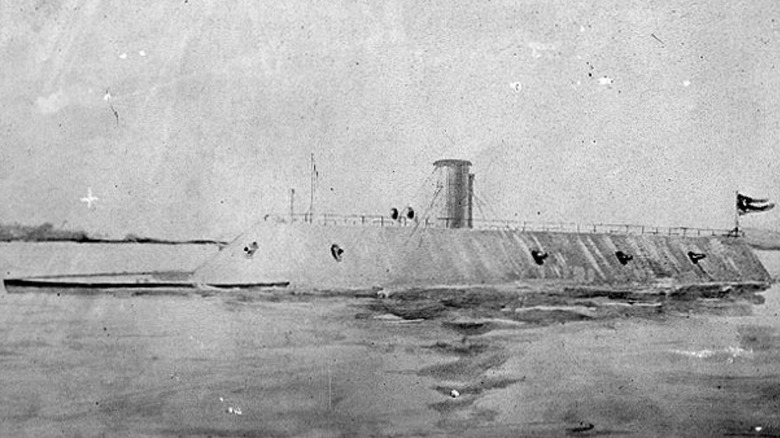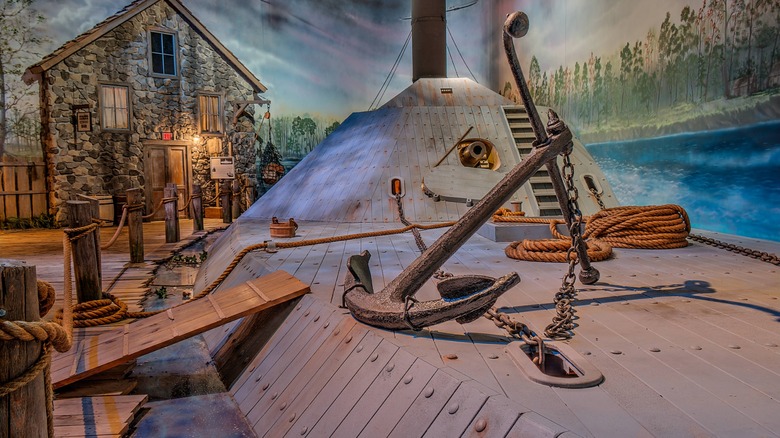What Was So Special About Ironclad Ships And Are There Any Left Today?
For almost all of human history, boats were made of wood. Sure, today we've got amazing ships built from steel and composites, but people have been sailing for thousands of years, so almost every ship in history was wooden. That's why it was such a big deal when, in 1861, the newly constructed CSS Manassas fought Union wooden warships at the Battle of the Head of Passes on the Mississippi River. Up to then, ships were primarily constructed from wood, and what little iron was in them accounted for only a fraction of their makeup.
After Union forces engaged the Confederacy's ironclad ship, it wasn't long before a new ironclad entered the water: the USS Monitor. But it wasn't alone. The CSS Virginia, formerly the USS Merrimack, was ready to engage, and on March 9, 1862, the age of iron arrived as they fought to a stalemate at the Battle of Hampton Roads. The USS Monitor and CSS Virginia had changed naval warfare forever.
After this proof of ironclads' effectiveness in battle and ability to shake off cannonballs, the world's other navies began making ironclads, too. These days, a handful still exist, which is a testament to their endurance. Wooden ships never fully disappeared, and even into World War II, battleships like the most-decorated USS New Jersey had wooden decks. But no longer. Wood can't withstand the requirements of 21st-century warships, which might not even be a thing were it not for the ironclad vessels of the American Civil War.
What exactly is an ironclad ship?
Iron wasn't absent from 19th-century ship construction before the ironclads came along. It was used to strengthen wooden hulls, provide internal supports with beams and bolts, and fasten it all together. And you can't forget the cannons and cannonballs. Adding iron to ocean-bearing ships wasn't a sudden change in ship design; it was gradual, beginning with the aforementioned uses before transitioning into the ironclads used during the Civil War.
For ironclads, the secret is in the name, because they're ships that are literally clad in iron casemates. This innovation put the Monitor on our list of revolutionary warships changed naval warfare. The primary concern in transitioning to iron wasn't cannonballs — they'd been around for centuries. The issue was with incendiary shells, which could strike a vessel and ignite it quickly. To combat the threat, wrought iron was used in hull construction.
Several ironclads existed before the Civil War, though they weren't fully encased in armor, and many of them kept their sails. Technically, the first iron boat was built in 1777 England, but it took nearly a century for the technology to advance enough to become useful in warfare. The French and British ironclad vessels that predate the Civil War featured iron armor around the waterline, the battery, and other significant areas of the ship, but it took the conflict in the Americas to push designers to fully enclose their vessels in iron.
You can visit several Civil War ironclads
The Civil War ended in 1865, and the U.S. Navy has long since moved away from wooden and ironclad vessels. That doesn't reduce their storied legacy, though. Despite being more than 160 years old, you can actually visit some still-existing ironclad vessels.
The USS Monitor sank during a storm in December, 1862, but it was recovered and many artifacts are on display at the Mariners' Museum and Park in Newport News, Virginia. The museum houses its revolving turret, steam engine, and other components. The CSS Neuse is another ironclad you can visit, at to the CSS Neuse Civil War Interpretive Museum in Kinston, North Carolina. The ship's remains are on display in a permanent exhibit showing elements of the vessel, with cutouts and rebuilt sections to show what it originally looked like.
You can find the USS Cairo ironclad at the USS Cairo and Gunboat Museum in Vicksburg, Mississippi, which houses the reconstructed ship. The vessel sank in 1862 and was recovered in 1964, several years after its wreck was discovered. Both the CSS Muscogee and a reproduction of the CSS Albemarle can be found at the National Civil War Naval Museum in Columbus, Georgia. The museum also houses several artifacts from Civil War ironclads, including parts from the CSS Georgia, and more. Replicas of the USS Monitor's turret and other artifacts can be found at the museum, which houses a large collection of similar items.


